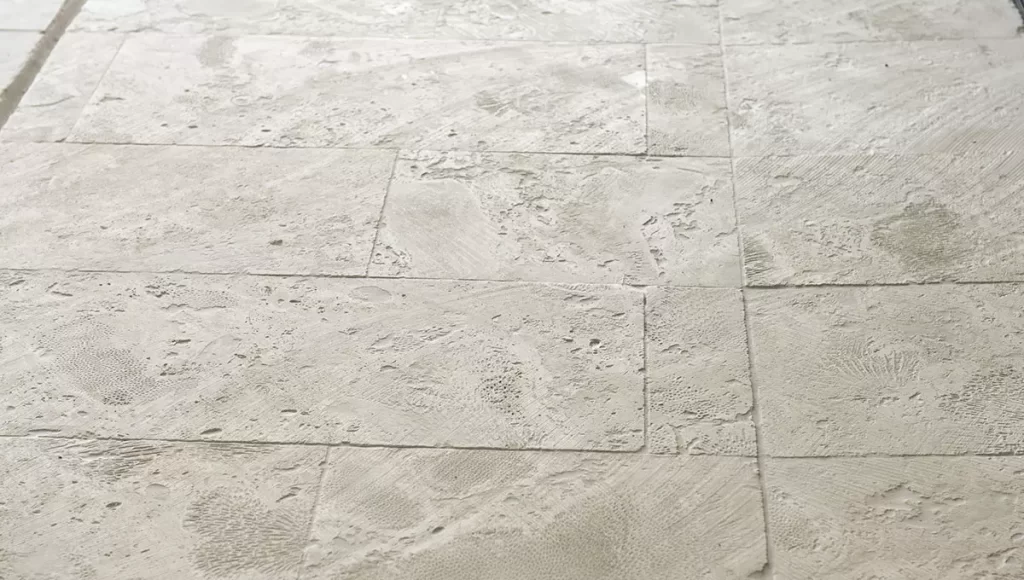At IMAGINE, we always strive to offer the highest quality materials to our clients. That’s why today, we’re going to talk about Coral Stone, used by designers for constructions, landscapes, pools, and outdoor elements due to its natural beauty, durability, and quality.
Where does Coral Stone come from?
Coral stone formed in marine beds during the Pleistocene period from fossils, corals, and other marine animals, so most of these stones originated in reefs, hence its name.
In fact, the Spanish explorers who arrived in America in the late 15th and early 16th centuries, guided by Christopher Columbus, used coral stone for the construction of their new settlements.
This is a limestone that is still abundant, mainly found in the Dominican Republic and Colombia.
Types of Coral Stone
Three varieties are commercialized in the current market based on density: porous, semi-porous, and compact. The porous type is the most commonly used for architecture and design.
This material allows for various finishes: rustic, polished, plastered, aged, and chamfered, among others.
Qualities of Coral Stone for Construction and Decoration
Today, coral stone is widely used for cladding buildings, fine residences, shopping centers, and hotels, especially in pool and jacuzzi areas, gardens, floors, and walls. It is also commonly used in the interiors of beach houses and bathrooms.
Furthermore, it is common to use it in the making of door and window frames, columns, balustrades, pool curbs, and decorative elements in both interiors and exteriors.
Its great usefulness derives from its resistance, durability, and sustainability. This material will bring beauty and quality for many years.
Why is Coral Stone Ideal for the Exteriors of Houses and Buildings?
As stated above, coral stone is one of the favorite materials for exteriors and pool areas, for example. Why is this? That’s because of its thermal properties.
At this moment, there is no material on the market capable of repelling heat better than coral stone. That is, even in the scorching sun of Costa Rica, you can walk barefoot on it without fear of burning.
For this reason, it is used on floors or facade cladding to maintain the coolness of the home.
Another advantage of coral stone is that it is very easy to clean and maintain. It is also a material that can be worked and repaired perfectly.
In conclusion, this material is highly recommended for cladding in external areas such as terraces or pools due to its quality of minimal heating and aesthetic beauty thanks to its light tones. Contact us at IMAGINE; it is available in two sizes: 30x60cm and irregular or scrap cutting.





